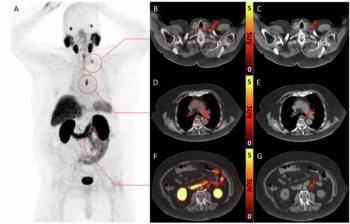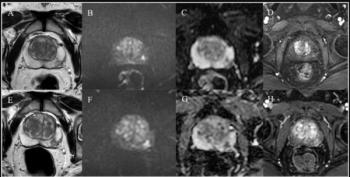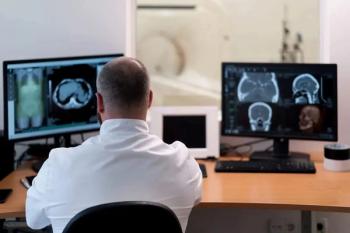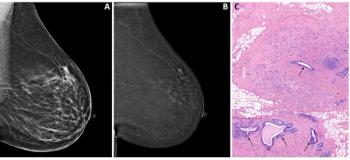
CT angiography data offernew approach to perfusion
Acute stroke is a medical emergency that is potentially treatable. Because "time is brain," however, the imaging workup must be fast and therapy initiated rapidly.
Acute stroke is a medical emergency that is potentially treatable. Because "time is brain," however, the imaging workup must be fast and therapy initiated rapidly.
Images should first be checked to exclude signs of hemorrhage. Practitioners then need to visualize any early ischemic changes, demonstrate the presence of hypoperfusion, locate any underlying vascular pathology, and elucidate the presence of a potential penumbra.1 The presence-or absence-of vessel occlusion is particularly important if the patient is to be treated with recombinant tissue plasminogen activator (rtPA).
A variety of imaging techniques can be used to assess irreversible damage to the infarct core and to evaluate tissue at risk of infarction. These include diffusion- and perfusion-weighted MRI, MR angiography, unenhanced CT, CT angiography, and perfusion-weighted CT (Figures 1 and 2).2
MRI is, theoretically, the method of choice for stroke imaging. It can provide precise information about cerebral perfusion, the size and territory of the acute infarction, microangiopathic changes, and the status of cerebral vasculature throughout the entire brain without exposing patients to ionizing radiation. It is not, however, used as the standard modality for acute imaging examinations in the majority of stroke centers. This is due to the limited availability of MR systems, the relatively long time that the scanner would be occupied, noncompliant patients, and various contraindications, such as cardiac pacemakers.
CT typically plays the predominant role in acute stroke imaging. The time needed to complete a CT examination is very short, scanners are more widely available, fewer contraindications must be considered, and patient monitoring is easier. Economic considerations also favor CT.
Concerns over the link between nephrogenic systemic fibrosis and gadolinium-based MR imaging contrast agents3 and the appearance of studies demonstrating no or low incidence of contrast-induced nephropathy following CT stroke imaging with iodinated contrast4,5 suggest that CT will play an even more important role in stroke imaging in the future.
PERFUSION PROTOCOLS
Information about at-risk brain tissue requires that data on cerebral blood per-fusion be obtained. The most common approach is to acquire a dynamic scan series during contrast injection. This can be achieved with either CT or MRI. The following parameters can then be calculated and mapped:
- Cerebral blood flow (CBF): volume of blood flow per unit of brain tissue per minute; normal range in gray matter = 50 to 60 mL/100 g/min.
- Cerebral blood volume (CBV): volume of blood per unit of brain tissue; normal range = 4 to 5 mL/100 g.
- Mean transit time (MTT): time difference between arterial inflow and venous outflow.
- Time to peak (TTP): time between contrast injection and attenuation peak.
It is usually sufficient to calculate either MTT or TTP, not both. The choice will depend on the algorithm used; deconvolution algorithms provide both parameters but need more user interaction and calculation time, while maximum-slope algorithms are less timeconsuming but provide only TTP values.
Regional changes observed in these maps can be used to predict infarction. The penumbra would be expected to show one of the following:
- Increased MTT with moderately decreased CBF (>60%), combined with normal or increased CBV (80% to 100% or higher), secondary to autoregulatory mechanisms; or
- Increased MTT with markedly reduced CBF (>30%) and moderately reduced CBV (>60%).
Infarcted tissue, on the other hand, should show a significant decrease in both CBF (< 30%) and CBV ( < 40%) together with increased MTT and loss of autoregulatory mechanisms, which show a vasodilatation (increase of CBV) to compensate for decreased bloodflow.1,6
The perfusion CT parameter that most accurately describes tissue at risk of infarction in cases of persistent arterial occlusion is the relative MTT (optimal threshold 145% compared with the healthy hemisphere). The parameter that most accurately describes the infarct core on admission is the absolute CBV (optimal threshold 2 mL/100 g/min).7
The main restriction associated with perfusion CT is the limited volume of coverage obtained by sequential scanning. This depends on the width of the CT detector, which typically ranges from 2 to 4 cm.
Scans of pseudo-axial volumes (images oriented orthogonally to the long axis of the head, which is not necessarily parallel to the scanning axis) at the level of the basal ganglia allow vascular territories around the anterior, middle, and posterior cerebral arteries to be assessed in one volume. Smaller, isolated infarctions superior to the basal ganglia will not be visualized.
Advances in CT hardware are now helping to extend the coverage of brain perfusion studies. Toshiba has created a CT system with a much wider detector (15 cm) and 320 detector rows. Other vendors use a toggling table to increase scan coverage. Both of these technologies permit whole-brain perfusion imaging. The high cost of these high-end scanners, however, means that access is currently restricted to a small number of radiology departments.
POSTPROCESSING OPTIONS
An alternative to dynamic perfusion CT is the semiquantitative analysis of perfused blood volume (PBV). Developments in postprocessing software systems are enabling 3D PBV to be calculated semiautomatically for the entire brain.
Relevant data are acquired from existing unenhanced CT and CTA images following a modified stroke CT protocol.8 The software registers the volume data set of both scans automatically and performs 3D corrections to obtain identical head positions. The brain parenchyma is enhanced by subtracting unenhanced CT data from the CTA data. A color scale is added to the absolute parenchymal enhancement after subtraction.
An important advantage of this technique is that no additional scanning or injection of contrast agent is required for the PBV calculation. The maps can be constructed from unenhanced CT and CTA data alone. The resulting CT stroke protocol will have a lower radiation dose, require less time for imaging, and involve smaller amounts of contrast.
The major limitation of PBV imaging is that no dynamic information is available. An estimation of at-risk tissue is not feasible without access to CBF and MTT maps. PBV mainly allows visualization of irreversibly infarcted brain parenchyma. Another limitation of the PBV protocol is the restriction of scan length to strictly intracranial CTA volumes. Visualization of the extracranial, supra-aortic vessels is not possible with the current version of the software.
PBV could potentially serve as a surrogate marker for ischemia in a multimodal stroke CT protocol. Dynamic perfusion CT, on the other hand, would identify tissue at risk of infarction. A combination of both methods might increase the detection rate of ischemia and allow better stratification of therapy in the future (Figures 3 and 4).
Newsletter
Stay at the forefront of radiology with the Diagnostic Imaging newsletter, delivering the latest news, clinical insights, and imaging advancements for today’s radiologists.






























